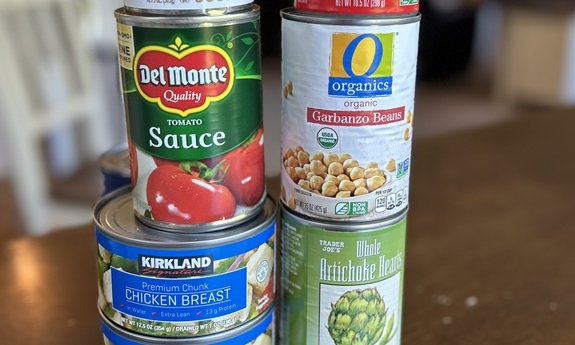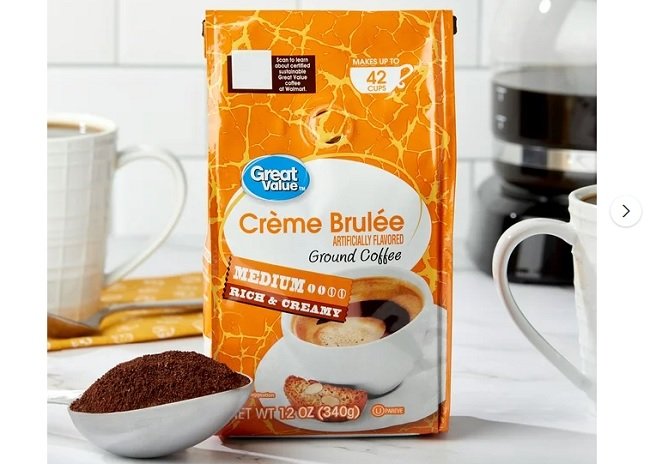Name Brands Vs. Store Brands: Which Items Provide the Best Value
When it comes to saving money on groceries and everyday items, one of the most common strategies is choosing store brands over name brands. Many shoppers are often skeptical about the quality of store brands, which are typically priced lower than their name-brand counterparts. However, significant savings can be realized without sacrificing quality. In this article, we’ll compare store brands and name brands across various categories and stores, providing specific examples to illustrate where you can save the most.

The perception that name brands are of higher quality is often a result of extensive marketing.
Cost Comparison Breakdown
Store brands are typically 15% to 30% cheaper than name brands. This price disparity primarily stems from the marketing and advertising costs that name brands spend, which are then passed on to the consumer.
So I thought it would be interesting to do some price comparisons on some popular grocery items to give you an idea of the savings store-brands can provide.
Health and Beauty
– Pain Relievers: CVS Health ibuprofen sells for $7 for a bottle of 100 tablets, while Advil sells its version for $9.49. Choosing CVS’s brand saves 26%.
– Shampoo: At Walgreens, their store brand shampoo costs $3.99 for a 12.5 oz bottle, while Pantene Pro-V shampoo of the same size is priced at $4.79, making the store brand 17% cheaper.
See Also: Hate Coupons? Smart Ways to Save Without Using Them
Breakfast Items
– Oatmeal: Quaker Oats sells their instant oatmeal at $3.67 for a 10-pack, while Aldi’s Millville brand offers a similar 10-pack for $1.59. Choosing Millville can save shoppers approximately 57%.
– Cereals: At Walmart, Great Value corn flakes are priced at $2.48 for an 18 oz box, while Kellogg’s Corn Flakes cost $3.98 for the same size. This represents a savings of about 38%.
– Yogurt: Chobani Greek Yogurt typically costs $1.19 per 5.3 oz cup. In contrast, Trader Joe’s store brand Greek yogurt sells for $0.99 for the same size, offering a savings of 17%.
CHANGE YOUR PERCEPTION
Keep in mind that the lower price of store brands does not necessarily mean lower quality. Many store brands are actually manufactured in the same facilities as name brands, using similar or identical formulas. This is especially true with the Kirkland brand at Costco.
Baking Supplies
– Flour: A 5 lb bag of King Arthur Flour typically costs around $4.79. Compare this with Walmart’s Great Value brand, priced at $2.26 for the same quantity, providing about 53% in savings.
– Sugar: Domino Sugar, a popular name brand, sells its 4 lb bag for about $3.29, while Kroger’s store brand sugar costs just $2.19 for the same size bag, offering a 33% cost reduction.
Dairy Products
– Cheese: Kraft Cheddar Cheese (8 oz block) retails for approximately $2.69. ALDI’s Happy Farms cheddar cheese, also 8 oz, is priced at $1.89, saving customers 30%.
– Butter: A pound of Land O’Lakes butter typically costs $4.49. In contrast, Trader Joe’s store brand butter sells for $2.99 per pound, cutting the price by 33%.
– Milk: A gallon of Kroger brand milk costs around $2.59, compared to $3.49 for a gallon of Horizon Organic. Shopping Kroger’s own brand saves about 26%.
– Ice Cream: Häagen-Dazs vanilla ice cream (pint) retails for around $4.39. However, Safeway’s Signature Select vanilla ice cream, also a pint, is priced at $2.99, saving consumers approximately 32%.
Condiments
– Ketchup: Heinz Ketchup (20 oz bottle) is priced at around $2.59. Walmart’s Great Value ketchup of the same size costs $1.00, presenting a 61% saving.
– Mayonnaise: Hellmann’s Real Mayonnaise (30 oz) is generally sold for $4.29. Costco’s Kirkland Signature Real Mayonnaise of the same size is $2.89, offering a saving of about 33%.
See Also: Ultimate Cheat Sheet: All The Store Brands Made By Name Brands
Pasta, Veggies & Rice
– Spaghetti: A 16 oz package of Barilla spaghetti usually costs $1.29. Compare this with Target’s Market Pantry spaghetti, priced at $0.95 for the same size, saving shoppers 26%.
– Rice: Uncle Ben’s Original Rice (2 lb bag) is priced at $3.48, whereas Kroger’s store brand rice of the same weight costs $1.99, yielding a savings of 43%.
– Canned Vegetables: Target’s Market Pantry canned green beans are $0.55 for a 14.5 oz can, whereas Green Giant’s equivalent is $1.19. The store brand offers more than 50% savings.
Snacks and Sweets
– Cookies: Oreo cookies (standard pack) are typically $3.67. Publix’s store brand cookies of the same type are $2.29 per pack, offering about 38% in savings.
– Potato Chips: A 9 oz bag of Lay’s Classic Potato Chips costs $3.29 at most stores. Compare this with Publix’s store brand, which offers a 10 oz bag for $2.00, saving customers around 39%.
– Chocolate Bars: Hershey’s Milk Chocolate bar (1.55 oz) is priced around $0.89, while Dollar General’s Clover Valley brand is only $0.50 for the same size, representing a 44% savings.
Beverages & Coffee

– Coffee: Starbucks 12 oz ground coffee sells for $7.99 at most supermarkets. The equivalent from Walmart’s Great Value brand is only $3.88, yielding more than 51% in savings.
– Tea Bags: Lipton Black Tea (100 count) is often priced at $4.99, while ALDI’s Benner Classic Tea Bags (100 count) cost $1.89, showing a cost reduction of 62%.
MANY STORE BRANDS TASTE BETTER
In blind taste tests conducted by several consumer advocacy groups, many store brand products actually OUTPERFORM their name brand counterparts. For example, Trader Joe’s O’s cereal has been frequently rated higher in taste and quality compared to Cheerios.
Frozen Foods
– Frozen Pizza: DiGiorno Original Rising Crust Pepperoni Pizza typically costs $6.99, but Target’s Market Pantry version sells for $4.50. That’s a saving of about 25%.
– Frozen Vegetables: Birds Eye Steamfresh Frozen Mixed Vegetables (10 oz) cost around $2.19, whereas Walmart’s Great Value brand offers the same amount for $1.00. Customers save approximately 54% by choosing the store brand.
Personal Care
– Toothpaste: Colgate Cavity Protection (6 oz) is usually around $1.67. Costco’s Kirkland Signature Fluoride Toothpaste, which offers two 6.4 oz tubes, costs $4.49. This breaks down to roughly $1.11 per tube, saving about 34%.
– Body Wash: Dove Deep Moisture Body Wash (22 oz) sells for $6.88. Comparatively, Walgreens’ store brand, Complete Home, sells a similar product for $4.99 for the same quantity, saving 27%.
See Also: Amazon Hack: Learn How to Find Cheap Alternatives to Expensive Brands
Household Items
– Laundry Detergent: Costco’s Kirkland Signature Ultra Clean is $17.99 for 152 loads. Comparatively, Tide Original, which offers 96 loads, costs $19.99. Per load, Kirkland costs about 12 cents, while Tide costs about 21 cents – a savings of 43%.
LOYALTY HAS A PRICE
Despite the potential savings and comparable quality, some consumers remain loyal to name brands due to habits or perceived prestige. But it’s TIME TO CHANGE your mindset. Many are making a permanent switch after realizing the value and it’s time for you to consider the same.
Environmental and Ethical Considerations
In some cases, store brands also offer better value in terms of ethical considerations, such as organic certification and eco-friendly packaging, at a lower price point than name brands.
For example, Whole Foods’ 365 Everyday Value products often meet or exceed the environmental and ethical standards set by more expensive name brands.
10 Name Brands That Can Be Cheaper:
Finding instances where name brands are cheaper (or nearly as cheap) as store brands can be a bit challenging.
However, during sales, promotions, or with the use of coupons, name brands can indeed come close to or even undercut the prices of store brands.
Here are 10 examples where this often occurs:
1. Cereal: During a promotional sale, a name brand like General Mills Cheerios might be on sale for $2.50 for a large box, which could be less expensive than the store brand equivalent at a regular price of $2.75.
2. Pasta Sauce: Name brands like Prego or Ragu often offer coupons that reduce their price significantly, potentially making them cheaper or comparable to store brands. For instance, with a $1 off coupon, a jar of Prego could come down to $1.50, similar to or less than a store brand priced at $1.75.
3. Diapers: Major brands like Pampers or Huggies sometimes offer bulk purchase deals or discounts through loyalty programs, making them more cost-effective per diaper compared to store brands, especially when also considering rewards points or cash back.
See Also: 14 Cheap Grocery Stores You Need to STOP Driving Past
4. Soft Drinks: Coca-Cola or Pepsi products are frequently on sale, especially during holiday weekends or major sporting events, where the price per can or bottle could drop below the store brand soda prices.
5. Bottled Water: Name brands like Aquafina or Dasani often have sales that price them competitively with store brands, particularly at big box stores or during summer promotions.
6. Toothpaste: Colgate and Crest frequently have coupons available that can make their prices comparable to or less than those of store brand toothpaste, particularly for the basic varieties.
7. Laundry Detergent: Tide and Gain, known for their effectiveness, occasionally offer manufacturer coupons or store-based loyalty discounts that make them a good deal compared to store brands, especially per wash calculations.
8. Peanut Butter: Jif and Skippy often go on sale and can be cheaper with a coupon or during a BOGO (buy-one-get-one) sale compared to store brands.
9. Chicken Broth: Swanson’s chicken broth is sometimes sold at a lower price than store brands when bought in bulk or on sale around major cooking holidays like Thanksgiving.
10. Baking Mixes: Betty Crocker cake mixes and brownie mixes often go on sale for $1.00 or less, which can be as cheap as or cheaper than store brand mixes.
These scenarios are typical examples of how strategic shopping, taking advantage of sales, using coupons, and participating in loyalty programs can make name brands as affordable as—or even cheaper than—store brands.
Always keeping an eye on weekly ads and digital coupons can help shoppers make the most of these opportunities.
While brand loyalty and preferences might still sway some, the economic benefits of switching to store brands are evident.
TAKE THE LEAP
The next time you’re at the grocery store dive-in and buy a couple store brands that you’ve never tried before. It’s really the only way to figure out if they’re a quality substitute as personal tastes vary wildly. The potential for savings is undeniable in a time where every dollar counts.
Ask the Reader: What store brands are you most fond of, both in terms of taste and price? Let me know in the comments.

By Kyle James
I started Rather-Be-Shopping.com in 2000 and have become a consumer expert and advocate writing about out-of-the-box ways to save at stores like Amazon, Walmart, Target and Costco to name a few. I’ve been featured on FOX News, Good Morning America, and the NY Times talking about my savings tips. (Learn more)

